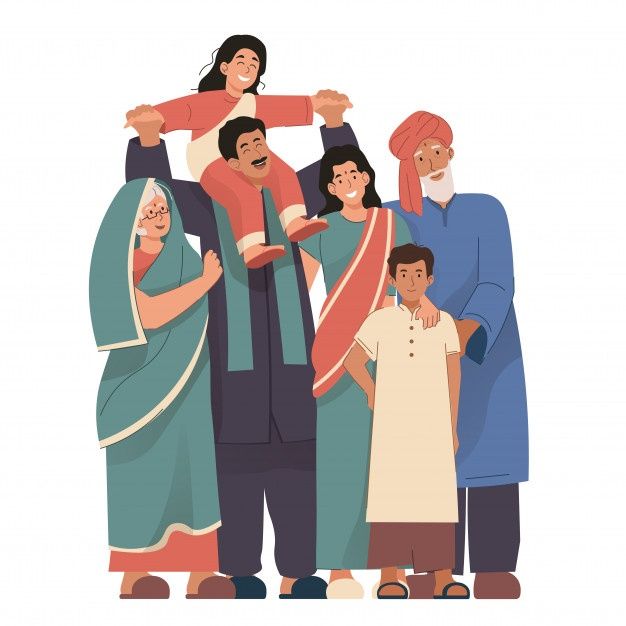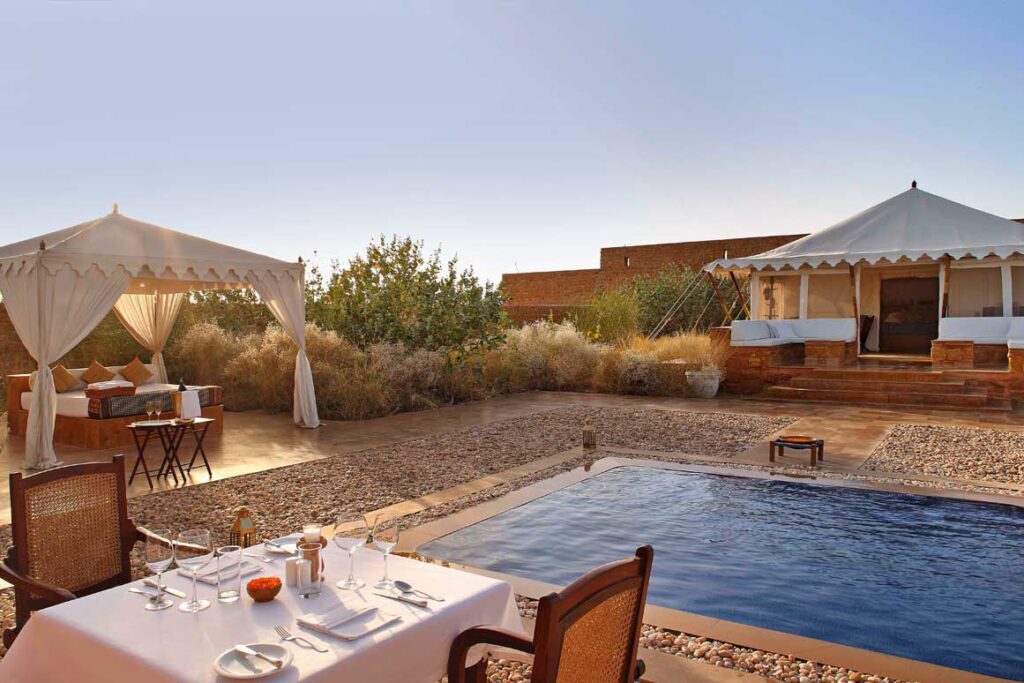Our love for travel has not fizzled out, it has cautiously transformed. Travelling when it’s safe has been the motto for all of us since 2020. The latest rage that has caught travel enthusiasts in a tizzy is to travel during festivals. India’s predominant festival season starts around the winter month of November, at this time families celebrate indoors. With schools and offices offering long holidays, it is no wonder people take time out for a winter vacation. An interesting feature of this travel trend that has been noted is that the entire family travels together. Being touted today as the ‘multigenerational vacation’, this idea has merely made an eclectic comeback from the ’90s when it was a steady norm in the Indian household.

2020’s global lockdown saw the birth of zoom events, weddings, meetings, etc. The desire to step out only got stronger. As soon as 2021 saw an ease in restrictions there was a travel boom, with bookings being made for domestic and international journeys. Travel is trending because the future months are unpredictable; this dominates the feeling of FOMO(fear of missing out). People plan with utmost spontaneity to avoid any cancellations.
Most winter vacation destinations are chosen on two criteria:
- Places where locals celebrate festivals with fervour. Colourful decor, lights, and music are favoured. Thus, offbeat locations are given a miss.
- Approachable locations are chosen. This means less travel time and more exploring.
Kerala has witnessed a peak in bookings during Onam, Mathura at the time of Holi, and Goa is mostly booked out in December due to Christmas and New Year celebrations. Travellers seek authentic experiences so they head to places where the festival originated or has key relevance until today. Hotels in Rajasthan witness an exceptional surge in bookings due to the vibrancy with which the winter festivals of Dussehra, Diwali, and Gangaur are celebrated here.

There’s a lot more to Rajasthan. This vast state has accessible cities and townships with unique landscapes. It also tops the list of preferred destination wedding places in India. Let’s take a look at some sought-after places for winter holidays in Rajasthan and what you can do there to make the most of the festive vacations:
1. Jaisalmer
Nearest Airport- Jodhpur 275kms; Delhi- 795km; Jaipur- 557km; Udaipur- 492km

The yellow sandstone seen almost everywhere here has earned this desert oasis the title ‘Golden City of India.’ The Jaisalmer Fort is a grand and majestic hill fort of Rajasthan that encircles the city. Its specialty? It is an urban center with temples and markets thriving here, with hundreds of residents calling it home. There is a lot more to this provincial desert than just temples and heritage sites. Don’t miss the famous pillar #609 on the International Line of Control; simply seek permission from the Jaisalmer military headquarters. A visit to the Indo-Pak Border is a must as it is a source of inspiration for many Bollywood historical and action movies. Longewala War Memorial, 10km away from the city, is the battlefield where the historic 1971 war took place.
Select the finest desert luxury camps in Rajasthan; from here you can visit the Thar Desert and ride camels on the ever-shifting dunes. Also meet the gypsies called the Kalbeliyas, famous for their snake charming and musical talents.

Shop for: Carpets and shawls made from camel’s hair, mirror-work garments, and silver ornaments.
Best time to visit: Between October to March when the sun’s heat is bearable.
2. Bikaner
Nearest Airport: Jodhpur 251kms; Jaipur- 334km; Delhi- 465km; Udaipur- 503km
Bikanerwala, an immensely popular and industrious food retail chain all over India with multiple outlets in almost every city had originated as the brainchild of this city’s craft. Overflowing with silver-coated ghewar and namkeen, Bikaner’s lanes are an epicurean’s dream! To sample these delights one has to traverse the narrowest gullies because here the best of things come tightly packed, foremost their bhujia. The compact lanes are also home to ancient Jain temples and the oldest examples of Mewari architecture, like the massive Rampuria Haveli. One particular Jain temple is called the ‘Ghee Mandir’ because its stone foundation had been solidified using 40,000kg ghee instead of water in the mortar; built in the 12th century formally it is called the Seth Bhandasar Temple. About 30km from Bikaner stands the Karni Mata Temple, where rats and mice roam free scrawling every inch of this revered temple.
Step into the spacious city fortress called Junagarh Fort & Museum; the guides available here at a modest fee can provide in-depth knowledge about its rich history and forgotten treasures. Gajner Fort with a lake-view front and private access to its namesake sanctuary is a 40-minute drive from the main city; we recommend dining here for sun-soaked sublime views.
The city also organizes a camel festival from late December to early January. Hosting several events like camel racing, camel milking, animal acrobatics, fur design, and best breed competitions, etc. It is enjoyable to see these animals dancing in response to the slightest directions of their riders; a colourful and jubilant revelry on the dunes.
Shop for: Camel hide accessories, authentic Kundan jewellery, Camel milk ice cream, Bikaneri sweets like ghevar & bhujia
Best time to visit: October to March
3. Pushkar
Nearest Airport: Jaipur 140km; Delhi- 417km; Udaipur- 276km; Jodhpur- 233km

The abode of Lord Brahma’s oldest four-faced statue in the world, Pushkar’s Brahma Temple was constructed in the 14th century. Ancient legend has it that Lord Brahma was in search of holy ground to conduct a religious ceremony; for this, he dropped his lotus to guide him. The lotus fell in a kund and then came to be known as Pushkar Lake; it has 52 ghats. This holy site is synonymous with all things spiritual; many take a dip here to cleanse their chakras. This city is one of the small yet significant places to see in Rajasthan. Pushkar is also renowned for its roses, so take a trip to the Rose Gardens to be enchanted by the scintillating aura and variety grown by the local rose farmers.
Seeking royal validation? Man Mahal in Pushkar is the largest royal residence here with surreal views; made as a retreat center for the king who commanded it, now it is a public guest house. 60km from Pushkar is Merta City known as the birthplace of Meera Bai, Lord Krishna’s acclaimed devotee, and a poetess. There is a temple made in honour of her unfaltering pious devotion.
Pushkar’s annual livestock fair held for consecutive eight days witnesses a huge turnout where a variety of animals are traded. This festival is also known as the Kartik Mela and is an opulent display of colour, rich fauna, funfair rides, and delectable food. A great fete to explore Rajasthani handicrafts, culture, and arts. Live dance performances by gypsies, events like wrestling, best-decorated camel, longest mustache, etc are held here.
Approximately 11km away from Pushkar stands the Mayo College in Ajmer, one of the oldest public boarding schools. Children of royal lineage from all over India have been educated in this fine institution. A must-visit for its breathtaking colonial architecture and sprawling grounds; the Mayo Museum houses rare antiques.
Shop for: Home decoration items, temple accessories, miniature paintings, and antiques.
Best time to visit: November to March
4. Ranakpur & Kumbhalgarh
Nearest Airport- Dabok, Udaipur 106.5km; Jaipur- 357km; Delhi- 628km
Ranakpur to Kumbhalgarh- 49km
Want to visit a picturesque valley secluded from the busy city’s din? With idyllic views, Ranakpur is a bountiful hamlet where you can book the finest boutique hotels like Mana Hotel. With a backdrop of the azure Aravallis, you can be sure to capture Instagram-worthy shots. Recline and repose while you enjoy the valley’s unpolluted air and rustic treks. But do take time out for a wildlife safari arranged by Mana Hotel and chance upon the recently famed ‘pink’ leopard; they can also arrange trips to the reserve forest. The sights of Kumbhalgarh Sanctuary can be seen via jeep safaris along with trained naturalists. Kumbhalgarh Fort is a gigantic hill fort in Rajasthan, second in length to the Great Wall of China. This World Heritage Site is a shining example of the Rajput prowess and mettle. Climbing up this steep fortress is not for the faint-hearted but as a reward, you get to enjoy the breathtakingly spectacular view from the apex, Badal Mahal. Every evening the fort is lit up, and annually a 3-day festival is held in honour of Rana Kumbha. The entire Ranakpur Kumbhalgarh belt is profuse with green foliage; allowing one to absorb the beauty of the wilderness.
No dearth of glittering gems in this quaint countryside. The Ranakpur Jain Temple built approximately 580 years ago is an architectural wonder with its jaw-dropping stone carvings. The density of workmanship and labour put into the making of this teerth cannot be justified in photographs. The Golden Jain Temple in Falna, 33kms away from this temple is also visited by Jains for its gold-covered spires or shikars. Wish to take regular sightseeing down a notch? Take a short drive to the Ranakpur Dam, a place to enjoy the tranquility of the lake sitting beside cloud-covered hills.

Shop for: Pottery items, gemstones, colourful puppets, and marble homeware
Best Time To Visit: All around the year as it has pleasant weather.
5. Udaipur
Nearest Airport- Maharana Pratap Airport at Dabok- 22km; Jaipur- 393km; Delhi- 664km
Udaipur, the ‘City of Lakes’ has earned the number one trending wedding destination in India for its romantic vibe and royal splendour. Also called ‘Venice of the East,’ this Rajputana land’s name spells out a plethora of images like blazing sunsets, boat rides on lakes, royal mahals, hilltop views, glorious temples, and globally renowned luxurious resorts. The City Palace will leave you in awe of its grand Mewari design and structure; it houses the Jag Mandir, a vintage car collection owned by the present-day Maharaja, and a copious museum. There are many places to see in Udaipur; among them, Monsoon Palace defines the euphoric life of the royals and is open for public viewing. Saheliyon ki Bari is an alluring garden with fountains and about 3kms from here a folk dance show is held every evening at Bagore ki Haveli; both giving an insight into the culture of Udaipur. The magnificent landscape of the Sajjangarh Wildlife Sanctuary, 11km from the city center, is home to diverse fauna and a must-visit for wildlife enthusiasts. ‘Shilpgram’ is a shopper’s paradise laden with Rajasthani arts and crafts, performances by tribal artisans. They also organize a 10 day fair annually in December. A trip to Udaipur cannot be complete without indulging in sundowners on Lake Pichola or Fateh Sagar Lake. Boat riding at the twilight hour can be an exalting experience. These artificial lakes are shining examples of excellence in sustainable development while promoting responsible tourism. But many tourists have found these lakes overcrowded due to their social media likeability. Better yet, how about a reclusive lakeside? Badi Talab is an excellent option, peaceful and scenic; it sees limited commercial activity. Here you can also trek to the top of the Bahubali Hill viewpoint that gives you a bird’s eye view of Udaipur’s stunning countryside.

Shop for: Leather goods, authentic jewellery, mens’ safas along with jackets, paintings, and sculptures.
Best time to visit: September to March
Seasons Greetings & Happy Trails to all!









